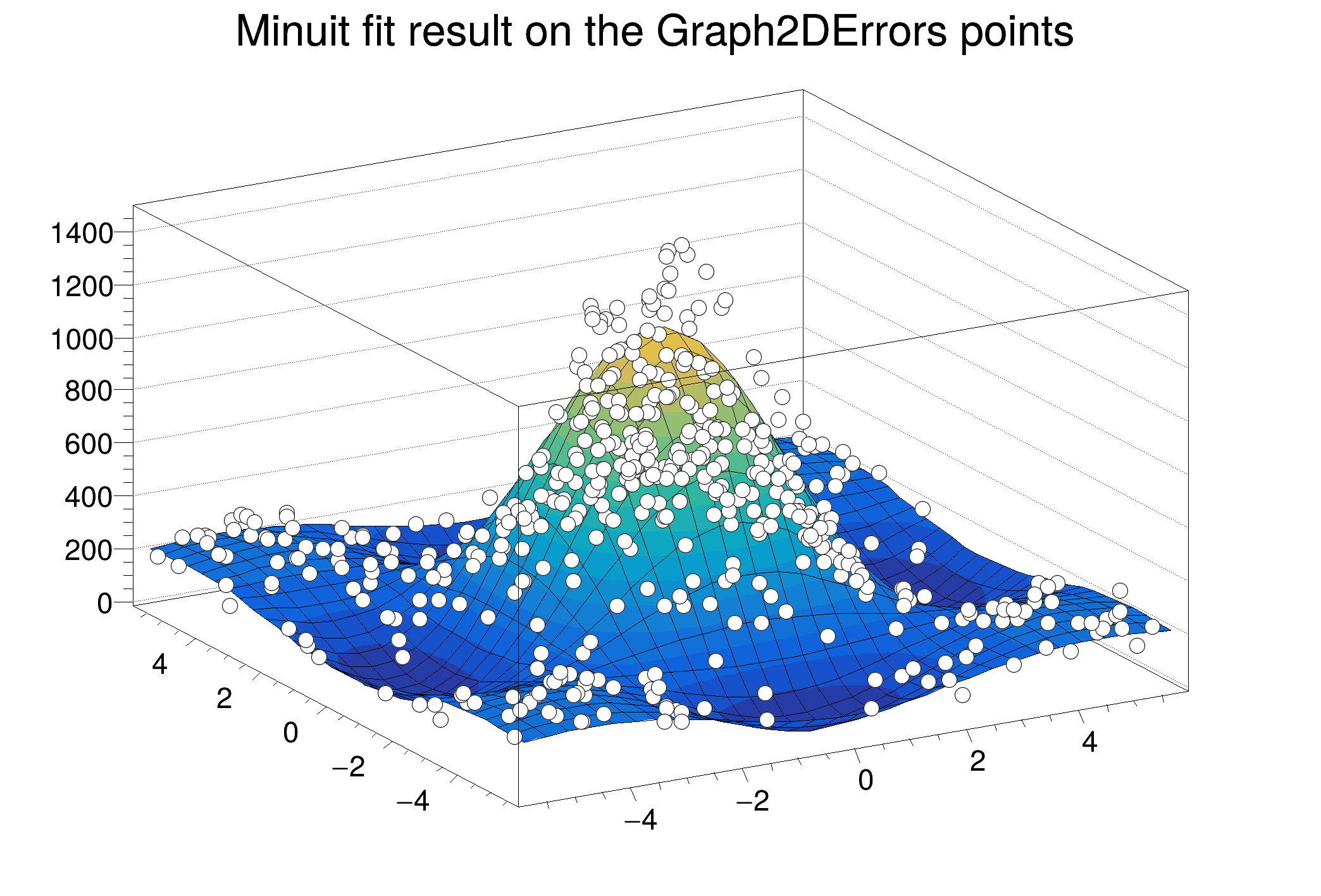

 Create, draw and fit a TGraph2DErrors.
Create, draw and fit a TGraph2DErrors.
See the TGraph2DErrors documentation
from ctypes import c_double
import ROOT
e = 0.3
nd = 500
f2 =
ROOT.TF2(
"f2",
"1000*(([0]*sin(x)/x)*([1]*sin(y)/y))+200", -6, 6, -6, 6)
zmax = 0
if z > zmax:
zmax = z
ez = abs(z * rnd)
ROOT::Detail::TRangeCast< T, true > TRangeDynCast
TRangeDynCast is an adapter class that allows the typed iteration through a TCollection.
- Author
- Olivier Couet, Jamie Gooding
Definition in file gr011_graph2d_errorsfit.py.


 Create, draw and fit a TGraph2DErrors.
Create, draw and fit a TGraph2DErrors. 